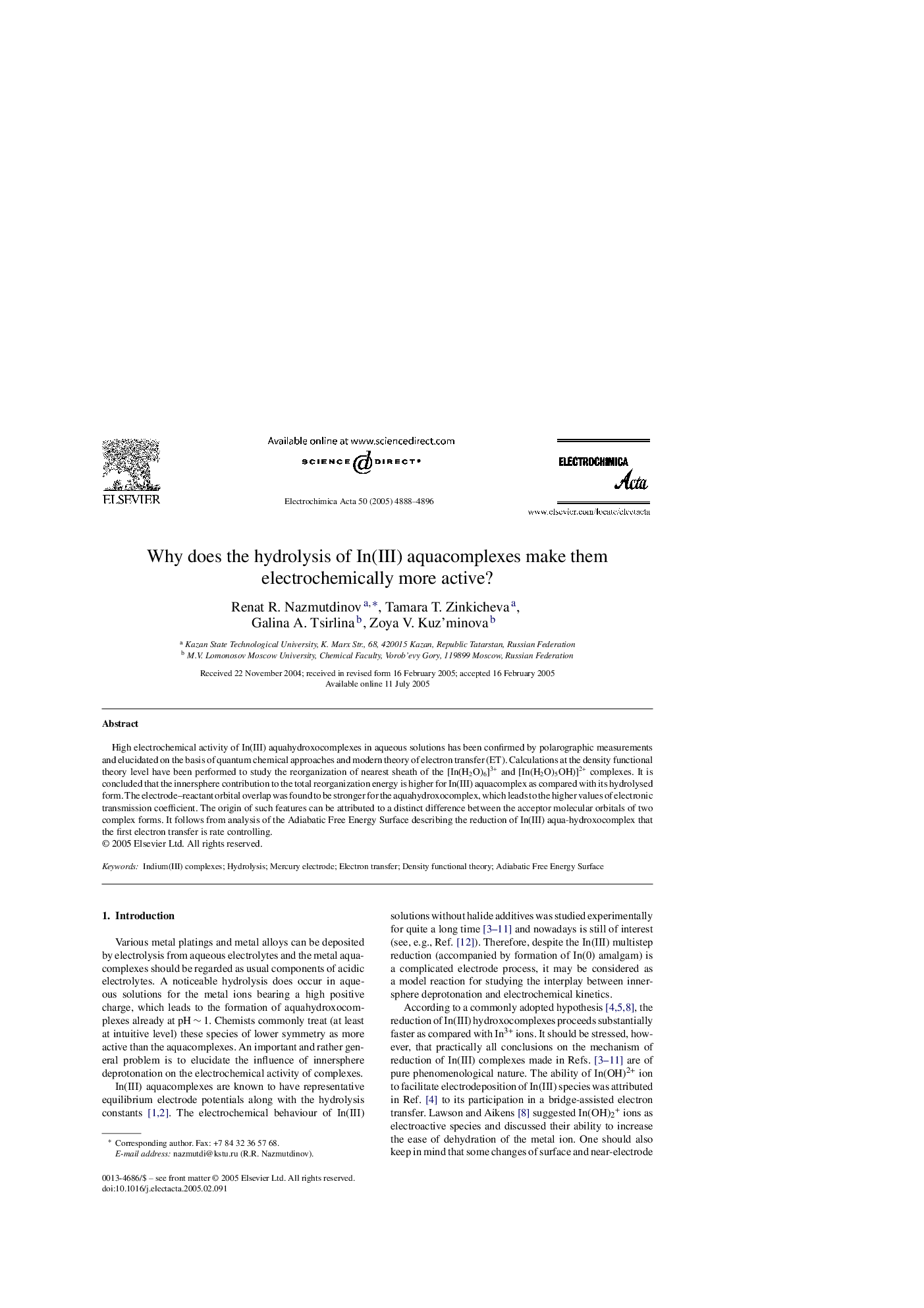| Article ID | Journal | Published Year | Pages | File Type |
|---|---|---|---|---|
| 197011 | Electrochimica Acta | 2005 | 9 Pages |
High electrochemical activity of In(III) aquahydroxocomplexes in aqueous solutions has been confirmed by polarographic measurements and elucidated on the basis of quantum chemical approaches and modern theory of electron transfer (ET). Calculations at the density functional theory level have been performed to study the reorganization of nearest sheath of the [In(H2O)6]3+ and [In(H2O)5OH)]2+ complexes. It is concluded that the innersphere contribution to the total reorganization energy is higher for In(III) aquacomplex as compared with its hydrolysed form. The electrode–reactant orbital overlap was found to be stronger for the aquahydroxocomplex, which leads to the higher values of electronic transmission coefficient. The origin of such features can be attributed to a distinct difference between the acceptor molecular orbitals of two complex forms. It follows from analysis of the Adiabatic Free Energy Surface describing the reduction of In(III) aqua-hydroxocomplex that the first electron transfer is rate controlling.
